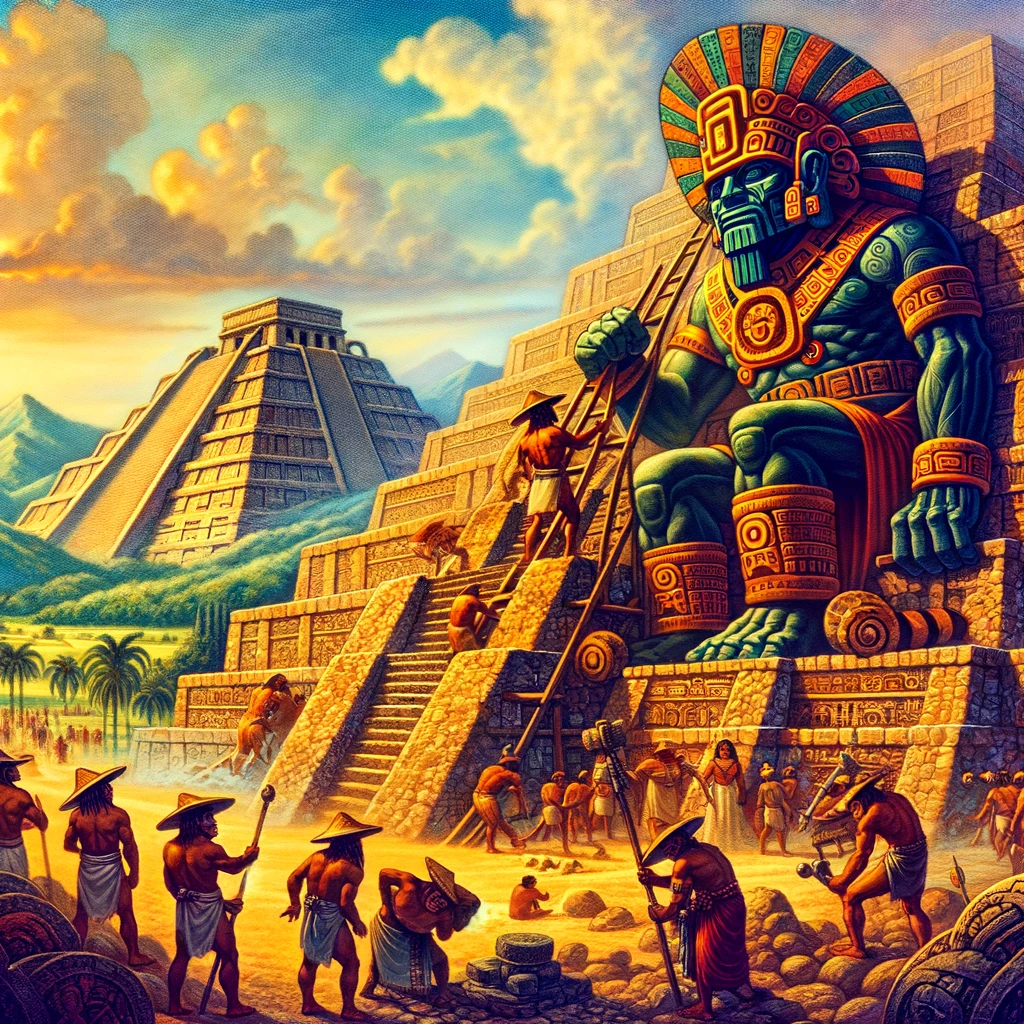The Quinametzin, often intertwined with the rich tapestry of Mesoamerican mythology, represent a fascinating chapter in the mythological heritage of pre-Columbian cultures. These colossal beings, whose name means “The Old Ones” or “Giants” in Nahuatl, are described in various Aztec, Toltec, and other Mesoamerican folklore and literature. Their story offers a glimpse into the cosmological thinking and the mythology of the people who flourished in what is now Mexico and Central America before the arrival of Europeans.
Origins and Mythology
According to Aztec mythology, the Quinametzin were created by the gods during the previous ages, or “Suns,” which are epochs governed by different deities and ended by cataclysmic events. The Quinametzin are particularly associated with the Sun of Rain (Nahui-Quiahuitl) and the Sun of Water (Nahui-Atl), where they were crafted by the gods to inhabit the earth. However, their inability to sustain the worship and respect due to their creators led to their downfall, with most narratives suggesting they were either destroyed by divine wrath or by natural disasters.
Role and Characteristics
The Quinametzin are often depicted as immense beings with great strength, capable of monumental architectural feats. This portrayal possibly served to explain the origins of various Mesoamerican architectural wonders that predate the Aztec civilization, such as the pyramids of Teotihuacan, and the massive stone structures of Tula, which were attributed to the Quinametzin’s craftsmanship.
These giants were not merely brute forces of nature but were also part of the cosmological balance, contributing to the creation and destruction cycles that underpin Mesoamerican mythology. Their interaction with the gods, their eventual downfall, and their role in the shaping of the earth highlight the complex relationship between humans, their environment, and the divine in Mesoamerican thought.
Cultural Significance
The tales of the Quinametzin transcend mere myth, embedding themselves into the cultural and religious practices of the people. They served as a link between the present and the mythical past, offering explanations for the origins of the landscape, the ruins that dotted it, and the human capacity for creation and destruction. In ceremonies and art, the Quinametzin were often invoked as symbols of power, creation, and the primal forces that shape the world.
Modern Interpretations
Today, the Quinametzin continue to captivate the imagination, not only within Mexico but also globally, as symbols of the rich mythological heritage of the Mesoamerican civilizations. They are studied by historians, archaeologists, and ethnographers who seek to understand the beliefs and worldviews of the Aztec and their predecessors. Moreover, they inspire literature, art, and popular culture, embodying the timeless fascination with giants and the mysteries of the ancient world.

In essence, the Quinametzin represent more than just mythological giants; they embody the deep connection between mankind, its creations, and the cosmos in Mesoamerican culture. Their story, interwoven with the fabric of pre-Columbian history and mythology, continues to inform and inspire, bridging past and present in the ongoing exploration of human imagination and belief.
